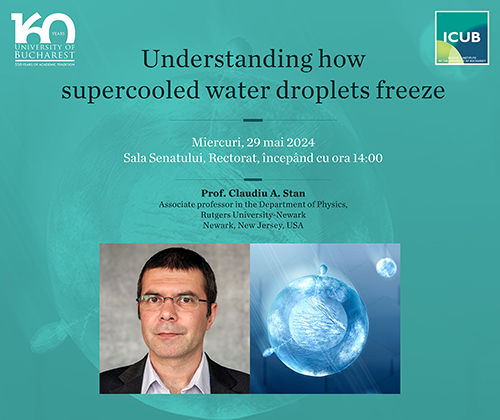Dr. Claudiu A. Stan, Physics Department, Rutgers University-Newark
Wednesday, 29 May 2024, University of Bucharest, 90 Panduri Street
Evolution of microstructure and development of crystalline order during the freezing of supercooled water microdrops
Supercooled water drops are often used for studying supercooled water and ice nucleation. They also occur naturally in clouds, where their freezing impacts the formation of precipitation and the radiative balance of Earth. The freezing of supercooled water drops is a complex process including nucleation, dendritic ice growth, and shape changes. Since some of these freezing stages are stochastic, individual drops freeze differently. Therefore, we collected snapshot images and X-ray diffraction from tens of thousands of drops freezing in vacuum after homogeneous ice nucleation near -39 °C. Based on the drop images, we developed a seven-stage model of freezing and determined average properties for all freezing stages.
We also used the freezing model to “time” the X-ray diffraction data, with a better precision than the spread of nucleation times. These time-resolved X-ray diffraction profiles captured the formation of long-range order in the ice crystals, which occurred on a timescale of less than 1 ms. The ice formed just after freezing had a strained hexagonal structure, which is distinct from both the stable hexagonal ice and from known metastable forms of ice. Despite its hexagonal symmetry, its strain and microstructure make it sufficiently metastable to transform to the other metastable phases. The experimental and analysis techniques we used could help determine the dynamics of freezing in other conditions, such as drop freezing in clouds, or help understand rapid solidification in other materials.

